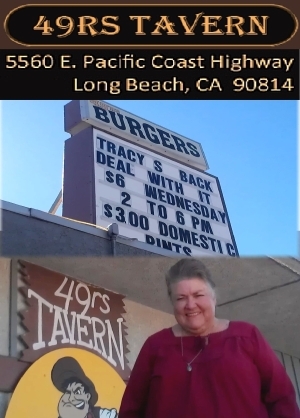(Oct. 8, 2012) -- A study by the Center for American Progress -- whose leadership includes prominent Democrats and establishment figures -- has concluded that successful efforts to reduce violent crime can generate significant savings for municipal budgets and large benefits for residents, and the biggest apart from increases in their housing values."
The study, titled "The Economic Benefits of Reducing Violent Crime: A Case Study of 8 American Cities" notes:
In today's tight fiscal and economic environment, the mayors and city councils of every city -- along with state and the federal governments -- are searching for ways to reduce their spending and expand their revenues. The common challenge is to achieve sustainable fiscal conditions without hobbling government’s ability to provide the vital goods and services that most Americans expect, all without burdening businesses and families with onerous new taxes. This analysis provides another way available to many American municipalities: Secure budget savings, higher revenues, and personal income and wealth gains by reducing violent crime rates...
And the study found the greatest economic benefits from reducing rates of violent crime come in increased property values. Citing as examples eight major American cities [not including L.A. or LB], the study found that "on average, a reduction in a given year of one himicide in a zip code causes a 1.5 percent increase in housing values in that same zip code the following year." Applying the figures to eight studied cities [not including L.A. or LB], the study found that increases in the value of housing stock ranged from $600 million in Jacksonville and the surrounding area to $800 million in the Milwaukee area, to $3.2 billion in Philadelphia and the surrounding suburbs, and $4.4 billion in the Boston area..."
The study's findings are similar in some respects to an April 2010 Rand study, Hidden in Plain Sight: What Cost-of-Crime Research Can Tell Us about Investing in Police, which differed in scope and methodology and cited the results of multiple previous studies in concluding that investment in police can generate substantial social returns.
In the introduction and summary to the latest study, authors Robert J. Shapiro (chairman of Sonecon, LLC, senior fellow at Georgetown University's McDonough School of Business, chair of the U.S. Climate Task Force) and Kevin Hasset (director of economic policy studies and resident scholar at the American Enterprise Institute) write in pertinent part:
Violent crimes are costly. Murders, rapes, assaults, and robberies impose concrete economic costs on the victims who survive as well as the families of those who lose their lives, in the loss of earnings and their physical and emotional tolls. Violent crimes also impose large costs on communities through lower property values, higher insurance premiums, and reduced investment in high-crime areas. In addition, violent crimes impose significant costs on taxpayers, who bear the financial burden of maintaining the police personnel and operations, courts, jails, and prisons directed toward these crimes and their perpetrators...
By most measures, violent crime continues to impose significant costs on Americans and their communities. The costs borne by the American public for this level of criminal activity are significant. Medical care for assault victims, for example, costs an estimated $4.3 billion per year. We spend $74 billion per year on incarcerating 2.3 million criminals, including some 930,000 violent criminals.
Moreover, the costs of the pain and suffering borne by the victims of violent crimes is several times greater than the more direct costs of those crimes. As a result, successful efforts to reduce violent crime can produce substantial economic benefits for individuals, communities, and taxpayers.
This report presents the findings and conclusions of a yearlong project to examine and analyze the costs of violent crimes in a sample of eight major American cities and estimate the savings and other benefits that would accompany significant reductions in those crimes. This analysis draws on data pinpointing the incidence and location of murders, rapes, assaults, and robberies. The data were provided by the police departments of Boston, Chicago, Dallas, Houston, Jacksonville, Milwaukee, Philadelphia, and Seattle...
[W]e calculated the benefits to those residents associated with substantial reductions in violent crime, including the impact on residential home values and a variety of savings to the city governments.
In today’s tight fiscal and economic environment, the mayors and city councils of every city -- along with state and the federal governments -- are searching for ways to reduce their spending and expand their revenues. The common challenge is to achieve sustainable fiscal conditions without hobbling government’s ability to provide the vital goods and services that most Americans expect, all without burdening businesses and families with onerous new taxes. This analysis provides another way available to many American municipalities: Secure budget savings, higher revenues, and personal income and wealth gains by reducing violent crime rates...
...The largest economic benefits, however, arise from the impact of lower rates of violent crime on the housing values in the cities sampled here. To estimate this effect, we use data covering several years on the incidence of violent crimes by zip code in each city and changes in housing values in the same zip codes over the same period. Five of the eight cities were able to provide data by zip code covering at least six years. Our analysis of those data found that a reduced incidence of murders in a particular zip code is followed by a predictable and significant increase in
housing values in the same zip code in the next year.
On average, a reduction in a given year of one homicide in a zip code causes a 1.5 percent increase in housing values in that same zip code the following year. We applied these findings to available data on the value of the housing stock in the metropolitan areas of all eight cities. The estimated increases in the value of the housing stock for the eight cities and their immediate metropolitan areas, following a 10 percent reduction in homicides, range from $600 million in Jacksonville and the surrounding area to $800 million in the Milwaukee area, to $3.2 billion
in Philadelphia and the surrounding suburbs, and $4.4 billion in the Boston area...
For the study's full Introduction and Summary, click here.
For the full study, click here.
On its website, the Center for American Progress says it was founded in 2003 by John Podesta, former Chief of Staff to President Clinton, to "provide long-term leadership and support to the progressive movement." The group's Exective Committee includes Neera Tanden (formerly with Clinton and Obama administrations) and Carol Browner (Clinton administration EPA Administrator). Its Distinguished Senior Fellow is former Senator (former Majority Leader) Tom Daschle (D., SD).















